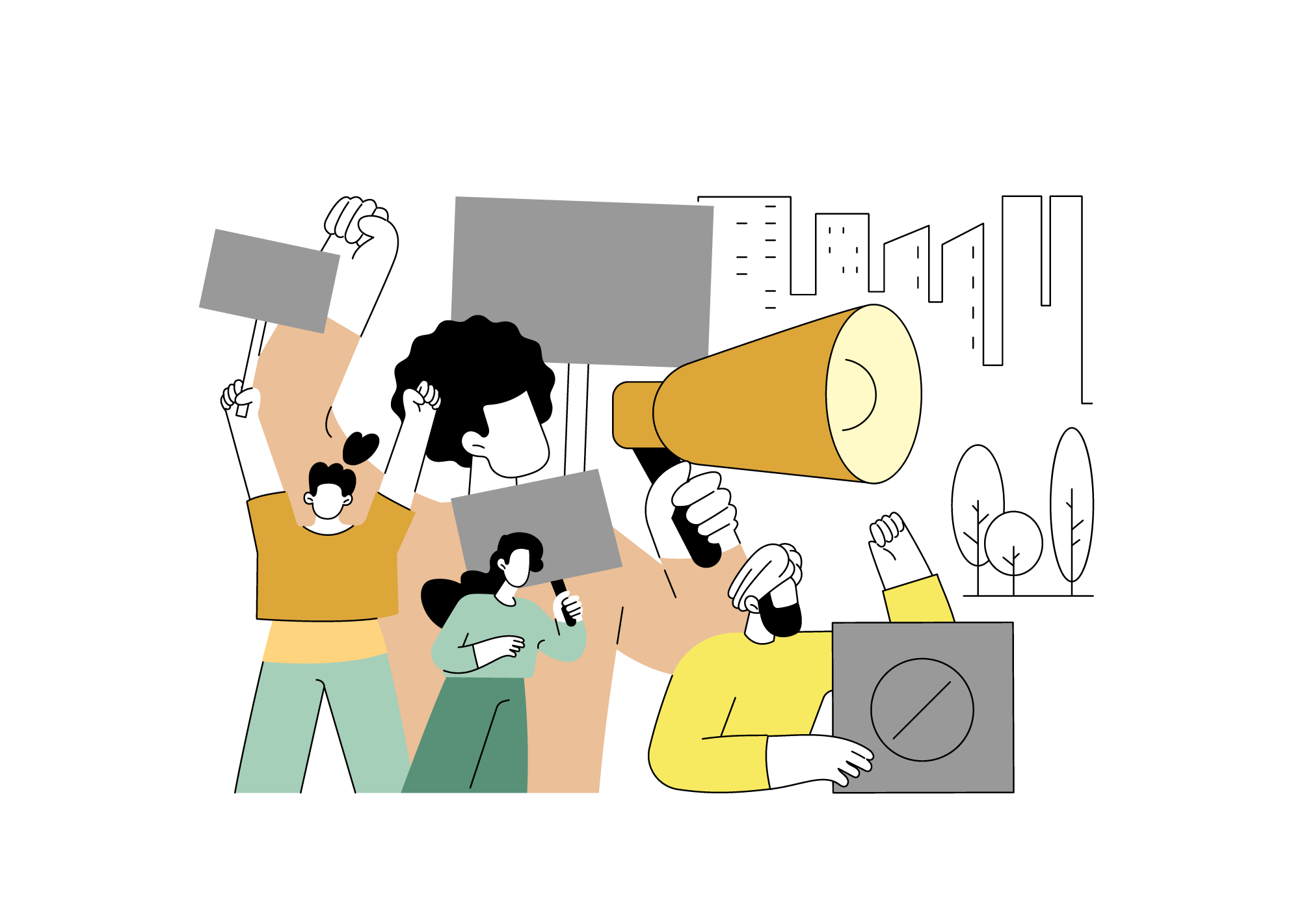Mind the generational gap
building the intergenerational dialogue in democracy movements
Every movement needs leaders with years of hard-won wisdom and energetic young activists with smart new ideas.
In a perfect world, these two groups—the old guard and the vanguard—would get together to share knowledge, exchange constructive feedback, and decide on the most effective way to advance it.
In the real world, intergenerational dialogue is proving to be a challenge that threatens to hinder the progress of the human rights and democracy movements around the world.
We collected and examined an extensive body of research from Europe, Asia, and the United States to understand some of the cultural and financial factors that reinforce this generational gap, and to figure out what funders and others can help bridge it. Below is what we learned.
In the real world, intergenerational dialogue is proving to be a challenge that threatens to hinder the progress of the human rights and democracy movements around the world.
We collected and examined an extensive body of research from Europe, Asia, and the United States to understand some of the cultural and financial factors that reinforce this generational gap, and to figure out what funders and others can help bridge it. Below is what we learned.
But first, the TLDR
For those who don’t have time to read the rest of this article, we’re putting the important stuff up front. Here’s a shortlist of what we gain by bridging the generational gap—and what we stand to lose if we don’t.
| What we gain | What we lose |
|---|---|
| Diversity of perspectives | Hard-won knowledge & wisdom |
| Expanded volunteer & supporter base | Established networks |
| Sustainability of movements | Momentum of past successes |
| Resilience & adaptability | Resilience & adaptability |
| Cross-generational mentorship | Intergenerational trust |
| Innovation & digital engagement | Organizational continuity |
Insight 1: young activists are eager to engage

Young activists are motivated and optimistic about their ability to affect change, but they expect meaningful participation—not tokenistic engagement—and often feel sidelined at traditional CSOs (civil society organizations).
- 68% of young people are eager to engage in social causes, but only 21% feel empowered to make an impact within existing organizations.
- There is a growing expectation among Gen Z and Millennials for transparency, inclusivity, tangible action, and substantial roles in decision-making processes and strategic planning at organizations they support or work for.

Insight 2: current leaders lack succession plans

According to the Nonprofit Leadership Alliance, nearly two-thirds of nonprofit organizations do not have a formal succession plan. A 2015 Third Sector New England survey of 1,200 of nonprofit executives and board members discovered the same thing: 60% of nonprofit leaders planned to leave their positions within five years, yet fewer than a third had a formal succession plan in place.
What’s more, only 1 in 5 nonprofits feel confident in their organization's ability to develop leadership skills in their employees.
Taken together, this data reveals a systemic issue in the nonprofit sector's preparedness for leadership transitions: when older leaders leave, their knowledge and experience too often leaves with them, and too few structured development opportunities limit the potential for young activists to assume leadership roles.
What’s more, only 1 in 5 nonprofits feel confident in their organization's ability to develop leadership skills in their employees.
Taken together, this data reveals a systemic issue in the nonprofit sector's preparedness for leadership transitions: when older leaders leave, their knowledge and experience too often leaves with them, and too few structured development opportunities limit the potential for young activists to assume leadership roles.

Insight 3: young activists favor flexibility and innovation

The 2021 Youth Civil Activism Report by the United Nations Development Programme highlighted that youth-led movements increasingly organize outside traditional NGO frameworks, favoring fluid, project-based engagements that allow for greater flexibility and innovation.
This trend suggests that for traditional civil society organizations to remain relevant and effective, they must evolve to embrace new models of engagement that resonate with and empower younger generations. This includes social media, which young people use as a tool to organize protests, fundraise, and build community around social issues.
This trend suggests that for traditional civil society organizations to remain relevant and effective, they must evolve to embrace new models of engagement that resonate with and empower younger generations. This includes social media, which young people use as a tool to organize protests, fundraise, and build community around social issues.

Insight 4: funders aren’t investing in succession planning

Limited funding is a significant barrier to effectively bridging the generational gap within civil society organizations.
Americans alone gave an historic amount to philanthropic causes in 2021 ($485 billion), but there has been an unfortunate 20% decrease in government funding for NGOs over the past decade. This overall reduction in available resources plus the competitive nature of grantmaking makes it difficult for CSOs to invest in leadership development and succession planning, and the allocation of private funds often neglects these critical areas altogether.
The consequence of underfunding in these areas impacts the sector's ability to maintain continuity, innovate, and adapt to changing social landscapes. This not only jeopardizes the sustainability of these organizations but also stifles the emergence of diverse and innovative leadership within the sector.
Americans alone gave an historic amount to philanthropic causes in 2021 ($485 billion), but there has been an unfortunate 20% decrease in government funding for NGOs over the past decade. This overall reduction in available resources plus the competitive nature of grantmaking makes it difficult for CSOs to invest in leadership development and succession planning, and the allocation of private funds often neglects these critical areas altogether.
The consequence of underfunding in these areas impacts the sector's ability to maintain continuity, innovate, and adapt to changing social landscapes. This not only jeopardizes the sustainability of these organizations but also stifles the emergence of diverse and innovative leadership within the sector.

Insight 5: young activists face financial barriers

Gen Z stands at the forefront of modern activism, demonstrating a remarkable commitment to social change. However, Gen Z more so than previous generations is disproportionately hampered by financial barriers.
As the most educated generation to date, they also bear the burden of unprecedented levels of debt. The rising costs of education mean that Gen Z is entering the activism sphere with an average of $20,900 in student debt— approximately 13% more than the preceding generation. This financial burden is a barrier to full-time engagement in nonprofit and civil society roles, which often offer lower compensation compared to other sectors.
The economic precarity faced by Gen Z influences their ability to volunteer or work for NGOs, limiting their potential impact and participation in activism.
As the most educated generation to date, they also bear the burden of unprecedented levels of debt. The rising costs of education mean that Gen Z is entering the activism sphere with an average of $20,900 in student debt— approximately 13% more than the preceding generation. This financial burden is a barrier to full-time engagement in nonprofit and civil society roles, which often offer lower compensation compared to other sectors.
The economic precarity faced by Gen Z influences their ability to volunteer or work for NGOs, limiting their potential impact and participation in activism.

How funders can help

Funders play a pivotal role in bridging the generational gap. Flexible, unrestricted funding is particularly useful, as organizations can use it to pursue solutions that match their circumstances. Funders can also invest in:
- Leadership development: Support programs that prepare young leaders, including mentorship opportunities with seasoned activists.
- Digital innovation: Fund initiatives that enhance digital literacy and technology for social change, bridging the digital divide within organizations.
- Intergenerational dialogue: Encourage and invest in platforms that activists across the social and generational spectrum can use to share knowledge, strategies, and visions for the future of activism.

Sign up for our lightweight newsletter
Insights and resources for important work